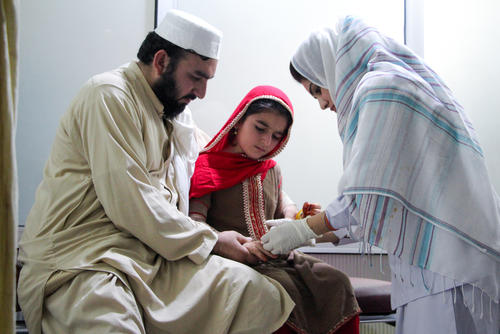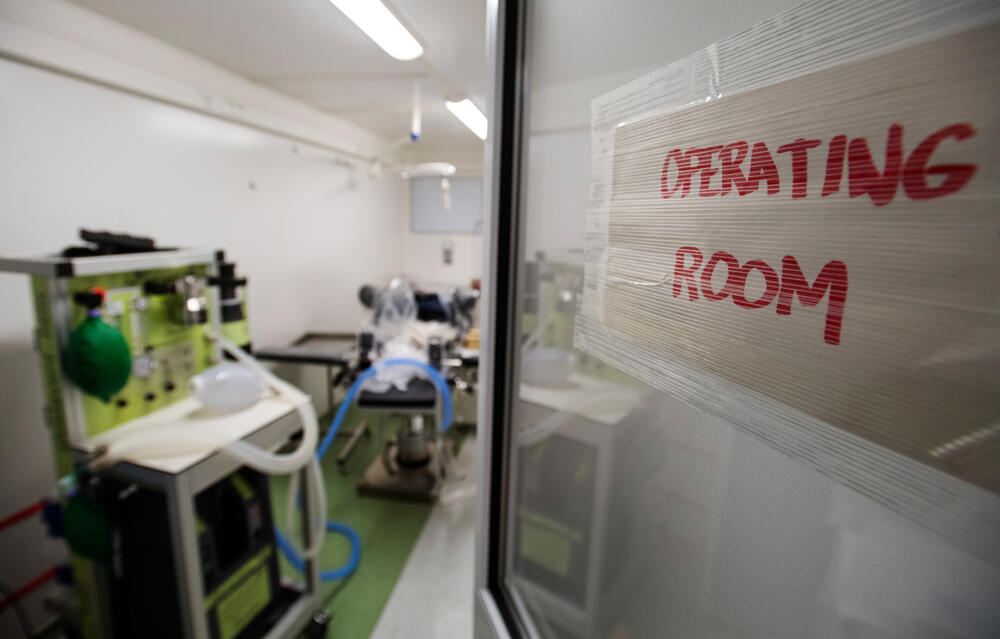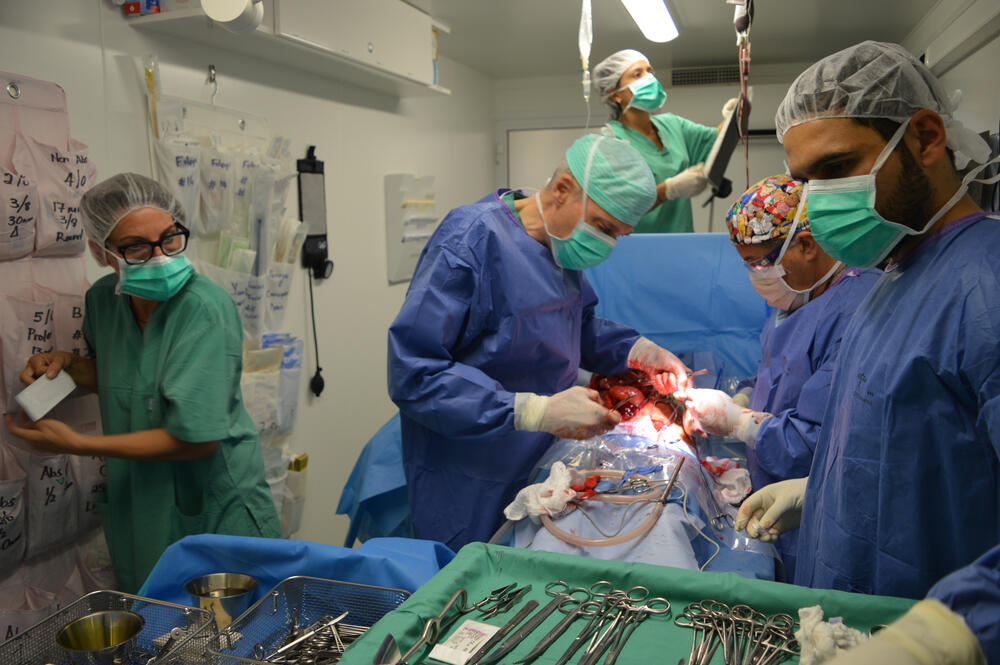Inside the 'MUST': The mobile unit surgical trailer
During the heaviest fighting in the battle for the Iraqi city of Mosul, project coordinator Arnaud Badinier was given two weeks to create a mobile surgical unit housed in a series of five trailers.
"The idea had been floating around MSF for a while, but had been put on the backburner. But when the conflict flared up in Mosul, people saw how useful it would be to have a surgical facility that was near the frontlines, but could be packed up and moved quickly if the fighting got too close.
They asked if I’d like to take charge of it. My background is in mechanical design, so I agreed to take it on. It was only then I was told I had just two weeks to come up with the design!
I teamed up with two experienced logisticians – one was also an architect, which was very useful. We were joined by a nurse with extensive surgical and emergency experience to give guidance on the medical side of things.
"The unit can be set up and ready for use in under three hours, while everything inside it can be strapped down and stored for quick transportation"
We talked a lot about the various scenarios the unit might face in the field, and altered the design and structure accordingly.
How will we manage all the wounded? How will the patient flow work? How much electricity will we need?
The unit is made up of five trailers containing an operating theatre; a recovery room and intensive care unit; a sterilisation room; a pharmacy for medical supplies; and a storeroom for logistical equipment.
It enables an MSF team located close to the frontline of a battle or in the middle of an emergency to conduct 100 surgeries without the need to bring in more supplies.
Inside the 'MUST'
1 Arrival - Wounded people arriving at the unit are received in the general triage tent, one of four tents set up in front of the trailers.
2 Triage - Medical staff assess the patients. Less urgent cases are transferred to another tent for treatment, while serious cases are moved to the surgical triage tent.
3 Transfer - Patients in the surgical triage tent are prioritised according to the severity of their injuries. From there they are carried by stretcher to the trailers for surgery.
4 The site - The site for the mobile unit surgical trailer needs to be at least 40 square metres to accommodate all the trailers and tents, and to be as flat as possible. A reliable source of water close by is a priority.
5 Logistics storeroom - Contains 40 square feet of storage for equipment, including water bladders and hygiene and IT equipment.
6 41 kVA generator - Along with two other generators, it allows the unit to function without an external power supply for days
7 Scrubbing and preparation - Operating theatre staff change their clothes in this area and the surgical team scrub up at the sink. Patients are transferred to a second stretcher to prevent the outside stretcher from contaminating the operating theatre.
8 Operating room - One surgical procedure can be conducted at a time. Within the operating theatre, and the unit as a whole, strict surgical care procedures and infection prevention and control protocols are maintained.
9 Recovery and intensive care unit - After surgery, patients are moved first to the recovery room, and then either to the three-bed intensive care unit or to the referral tent, to be taken to the nearest hospital.
10 Pharmacy - Contains 40 square feet of storage for medicines, vaccination fridges, surgical clothing and bedsheets.
Closest surgical facility to the frontline
"Once the design was finalised, the trailers were customised and equipped with all the necessary kit at a warehouse in Apeldoorn, in the Netherlands.
Everything inside the trailers – equipment, medicines, instruments – has to be boxed or shelved and then strapped into place for transport.
That meant finding a fridge, for example, that could stay switched on to keep vaccines cool even when the unit is on the move.
It’s important to remember that this is not a hospital.
But then again, at MSF we’re used to working in emergency situations where surgery happens outside – under trees or in tents. Just in terms of hygiene, this is a vast improvement on that.
The other big issue is that we couldn’t change the size of the containers. The lack of space created problems when we were designing the operating theatre.
Once you have a patient and the whole surgical team, it’s very cramped. We had to move the table to the side to create more space.
Once it had been transported to Iraq, the unit was positioned in a village just south of Mosul, making it the closest surgical facility to the frontline. On 16 February 2017, it received its first patients.

Help us continue our work in over 90 countries
The unit can be set up and ready for use in under three hours, while everything inside it can be strapped down and stored for quick transportation.
After the unit was deployed in Iraq, we received really useful feedback from the teams who used it, which we’re now incorporating into the design, so next time it’s deployed it will be even better.
It was really nice to know that the unit helped save lives in Iraq. Hearing that made all the long hours we worked in the cold worthwhile.”
MSF in Iraq
Iraq is recovering from years of conflict and instability.
Although the civil war ended in late 2017, the security situation remains complex and unpredictable due to ongoing political disputes, tribal conflicts and attacks by armed groups.
Although displaced people continued to return to their homes in 2019, more than a million still face significant barriers that prevent them from doing so. Some have been living in camps for years, with little access to basic services. At the end of the year, the violent crackdown on protests in various cities across the country put additional pressure on the health system.



